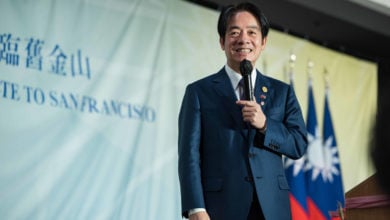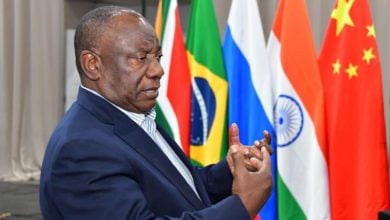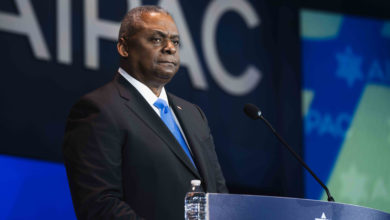The New York Times headline “U.S. Arms for Taiwan Send Beijing a Message” correctly captured the intent of the recently approved $6.4 billion in U.S. arms sales to Taiwan.
 Unable to crush the Chinese Revolution, Chiang Kai-shek moved his KMT government to Taiwan, where it continued to operate as a counterrevolutionary force. |
A similar sale valued at $6.5 billion took place in October 2008 under George W. Bush. The New York Times quotes an Obama administration official as stating: “Unlike the previous administration, we did not wait until the end of our administration to go ahead with the arms sales to Taiwan. We did it early.”
Not coincidentally, the deal was announced on the same day that the U.S. Secretary of State chastised China for its refusal to cooperate with the U.S. to sanction Iran.
The official justification for the overt U.S.-backed militarization of Taiwan has been Taiwan’s “defense” needs—a narrative that sharply departs from the history of imperialist aggression against China and the role of Taiwan in the conflict.
It has been 60 years since the Chinese Revolution defeated the Kuomintang (KMT) forces. The victory marked the triumph of the Chinese workers and peasants over their oppressors at home, but also the triumph of China over its oppressors abroad. It ended the “century of humiliation,” which had seen China carved up into spheres of influence by Japan, Britain and other imperialist nations.
The KMT regained the Chinese island of Taiwan from the Japanese in 1945, and its forces regrouped in Taiwan after the revolution. Altogether, 1.3 million Chinese—KMT officers and soldiers, as well as landowners and other elements of the Chinese ruling class—relocated to the Chinese island of Taiwan.
The KMT refused to recognize the People’s Republic of China, and its government still claimed sovereignty over the Chinese mainland. With Washington’s support, the illegitimate KMT government in Taiwan kept China’s seat in the United Nations while the PRC, the country with the largest population in the world, was denied a seat until 1971.
The U.S. recognition of the PRC in 1979, which included a formal acceptance of the PRC’s claim over Taiwan, was seen as a thawing of relations between the two countries. However, only four months later, the Taiwan Relations Act was passed by the U.S. Congress. The act served to rekindle diplomatic relations with the Taiwanese government, and has been used ever since to sell arms to Taiwan.
Another function of the Taiwan Relations Act was to establish the American Institute in Taiwan—a U.S. State Department project in Taiwan under the guise of private enterprise.
Taiwan remains the most important issue when it comes to Chinese national sovereignty. The PRC government rightfully sees it as an integral part of China. With the return of Macau to China in 1999, China has regained control over its entire national territory—except for Taiwan.
The military relationship between the United States and Taiwan is not a “partnership”; it is a tool for the implementation of U.S. imperialist policy. Despite China’s extensive capitalist reforms in recent decades, Washington recognizes that the Chinese government is fundamentally different from those of its imperialist allies. It seeks nothing short of the overthrow of the Chinese Communist Party and the removal of any obstacles that still remain for U.S. capital in China.
While China has made clear that the recent arms deal interferes with its internal affairs and national security, Washington continues a massive military buildup and continues to hinder the reunification of Taiwan with mainland China. Washington, not Beijing, is the real aggressor in the region.






